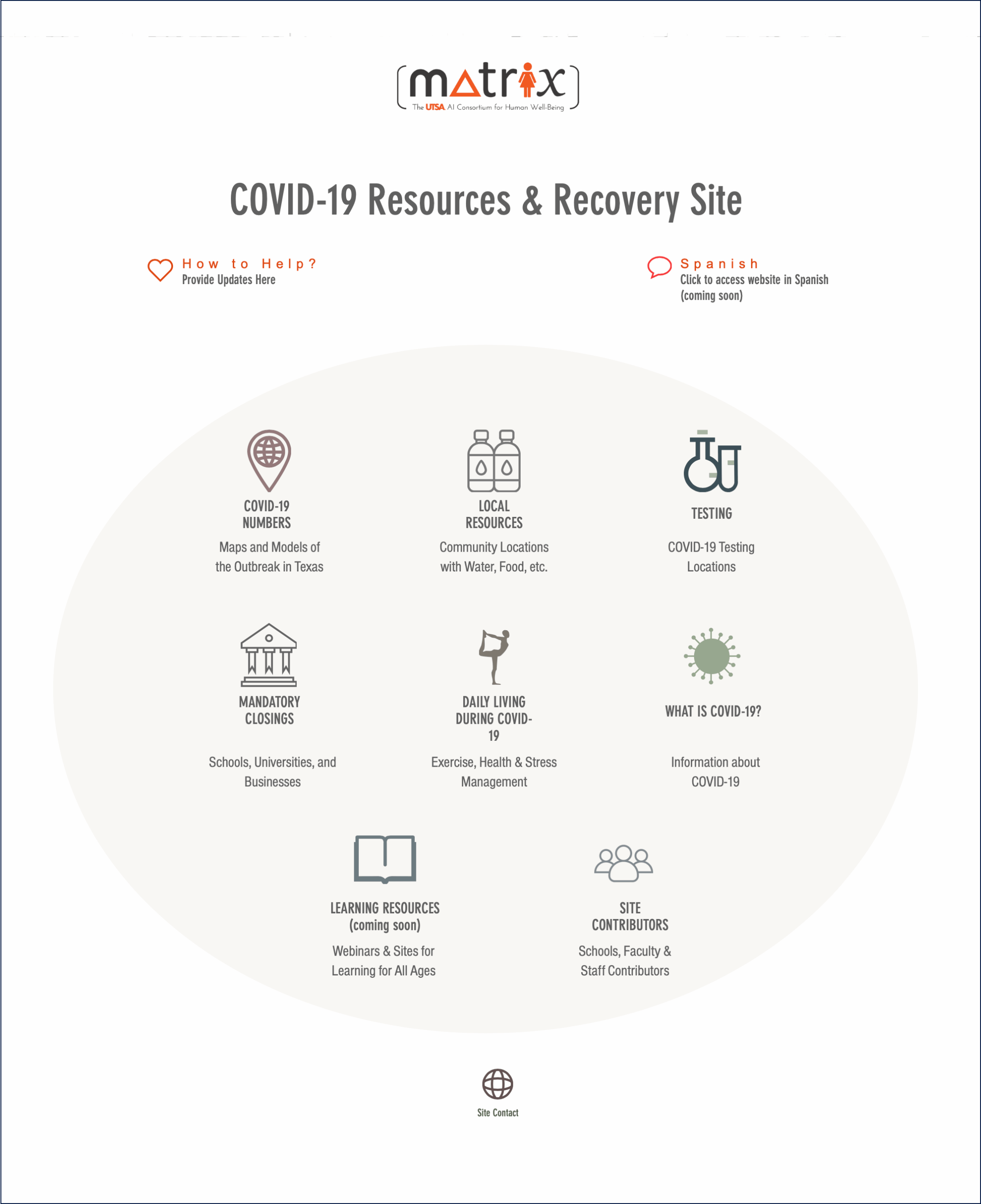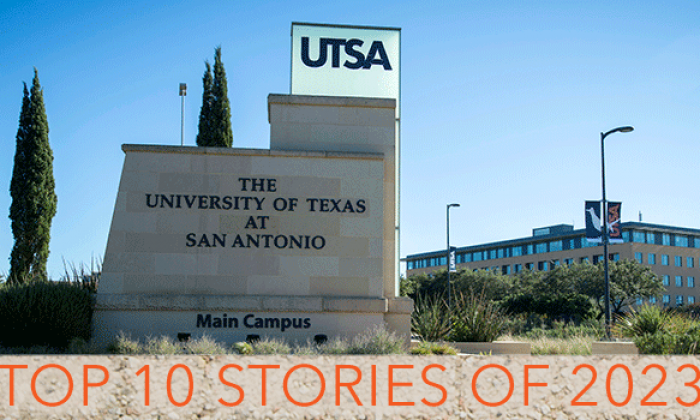APRIL 2, 2020 — What if there was a program where the general public could help each other locate food, personal protective equipment and get real-time updates on governmental directives during a pandemic? Well, there’s a website for that.
Researchers with UTSA’s Matrix AI Consortium for Human Well-Being have created a website that helps Texans share the location of scarce consumer goods in real-time, and it’s available now.
 The COVID-19 Resources & Recovery Site takes the power of crowdsourcing and places it in the hands of the public in the fight against the coronavirus, named SARS-CoV-2. By using and populating the recovery map with real-time data, the UTSA developers hope the tool helps the public assist each other during the pandemic.
The COVID-19 Resources & Recovery Site takes the power of crowdsourcing and places it in the hands of the public in the fight against the coronavirus, named SARS-CoV-2. By using and populating the recovery map with real-time data, the UTSA developers hope the tool helps the public assist each other during the pandemic.
Users can add the name and commercial location of a resource, such as meat and toilet paper at a specific H-E-B location or medicines and hand sanitizers at a Walgreens. The data will upload to the resource map, where anyone can locate what they need.
Additionally, the site provides other useful information, such as the location of testing sites, mandatory business closures, travel advisories and a map that tracks the spread of SARS-CoV-2 in Texas.
“We are incredibly grateful for the tireless efforts of several of our members who have contributed to the rapid development of this resource.”
“We are incredibly grateful for the tireless efforts of several of our members who have contributed to the rapid development of this resource,” said Dhireesha Kudithipudi, director of UTSA’s AI consortium. “I am deeply appreciative to work with these amazing students and faculty who care so much about our community.”
Kudithipudi recognized UTSA’s Amina Qutub, a biomedical engineering professor, and Hongjie Xie, chair of the Department of Geological Sciences, for their efforts in rapidly developing the site. Qutub served as the project leader for site development and was supported by Tej Pandit, a Ph.D. student who served as the primary developer for the resource mapping tool along with several undergraduate students. Xie, along with his graduate student Younghyun Koo, developed the virus tracking map for Texas and Bexar County.
“The consortium’s vision is to strive for scientific excellence in [artificial intelligence] research and develop holistic solutions for human well-being,” Kudithipudi said.
The UTSA Matrix AI Consortium researchers also are developing predictive models for COVID-19 spread throughout Texas, based on data made public through the Centers for Disease Control and Prevention, World Health Organization, Texas Department of State Health Services and the European CDC as well as collected data from local health experts.



